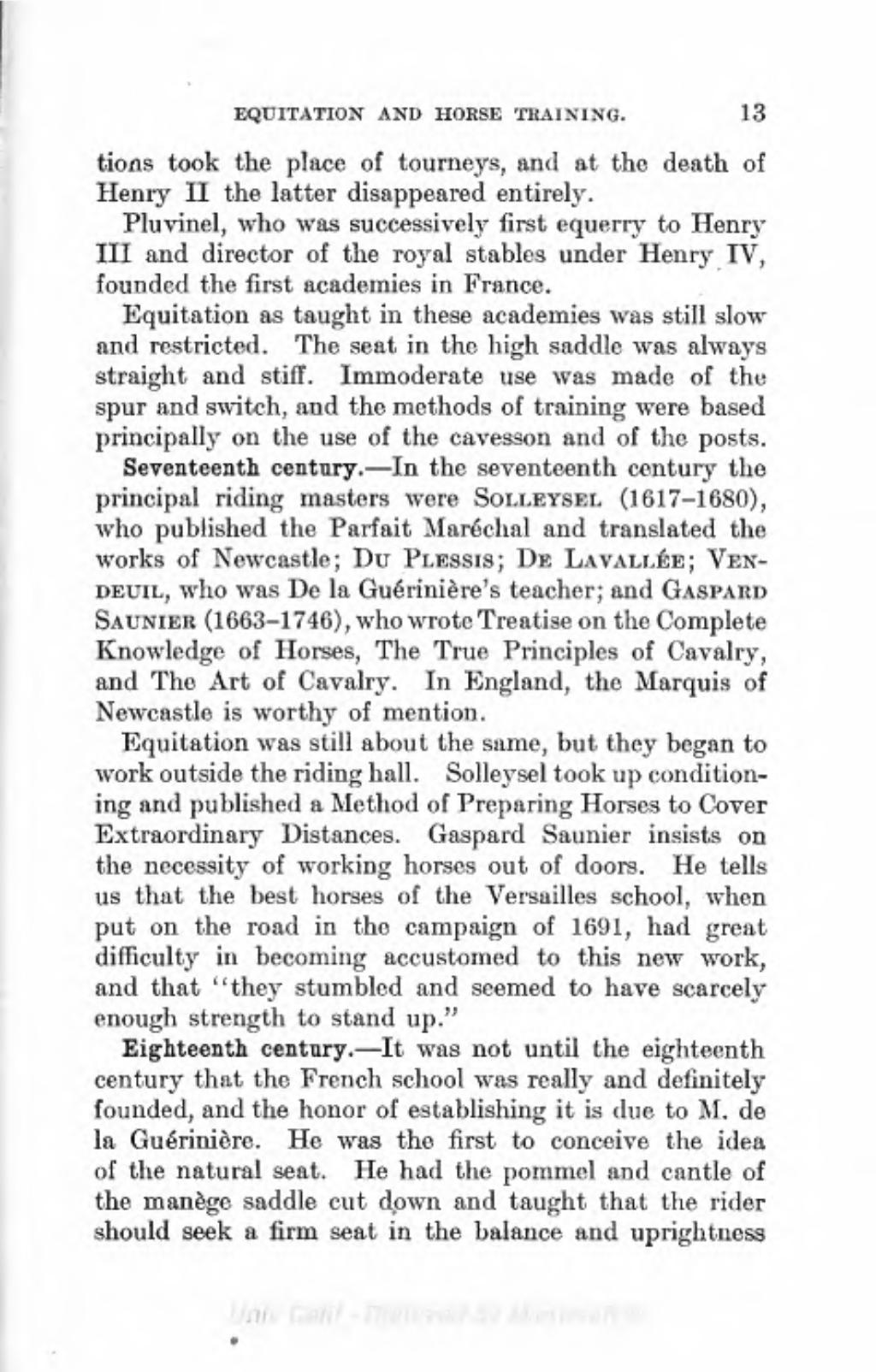competitions took the place of tourneys, and at the death of Henry II the latter disappeared entirely.
Pluvinel, who was successively first equerry to Henry III and director of the royal stables under Henry IV, founded the first academies in France.
Equitation as taught in these academies was still slow and restricted. The seat in the high saddle was always straight and stiff. Immoderate use was made of the spur and switch, and the methods of training were based principally on the use of the cavesson and of the posts.
Seventeenth century.— In the seventeenth century the principal riding masters were Solleysel (1617-1680), who published the Parfait Maréchal and translated the works of Newcastle; Du Plessis; De Lavallée; Vendeuil, who was De la Guérinière's teacher; and Gaspard Saunier (1663-1746), who wrote Treatise on the Complete Knowledge of Horses, The True Principles of Cavalry, and The Art of Cavalry. In England, the Marquis of Newcastle is worthy of mention.
Equitation was still about the same, but they began to work outside the riding hall. Solleysel took up conditioning and published a Method of Preparing Horses to Cover Extraordinary Distances. Gaspard Saunier insists on the necessity of working horses out of doors. He tells us that the best horses of the Versailles school, when put on the road in the campaign of 1691, had great difficulty in becoming accustomed to this new work, and that "they stumbled and seemed to have scarcely enough strength to stand up."
Eighteenth century.—It was not until the eighteenth century that the French school was really and definitely founded, and the honor of establishing it is due to M. de la Guérinière. He was the first to conceive the idea of the natural seat. He had the pommel and cantle of the manage saddle cut down and taught that the rider should seek a firm seat in the balance and uprightness
